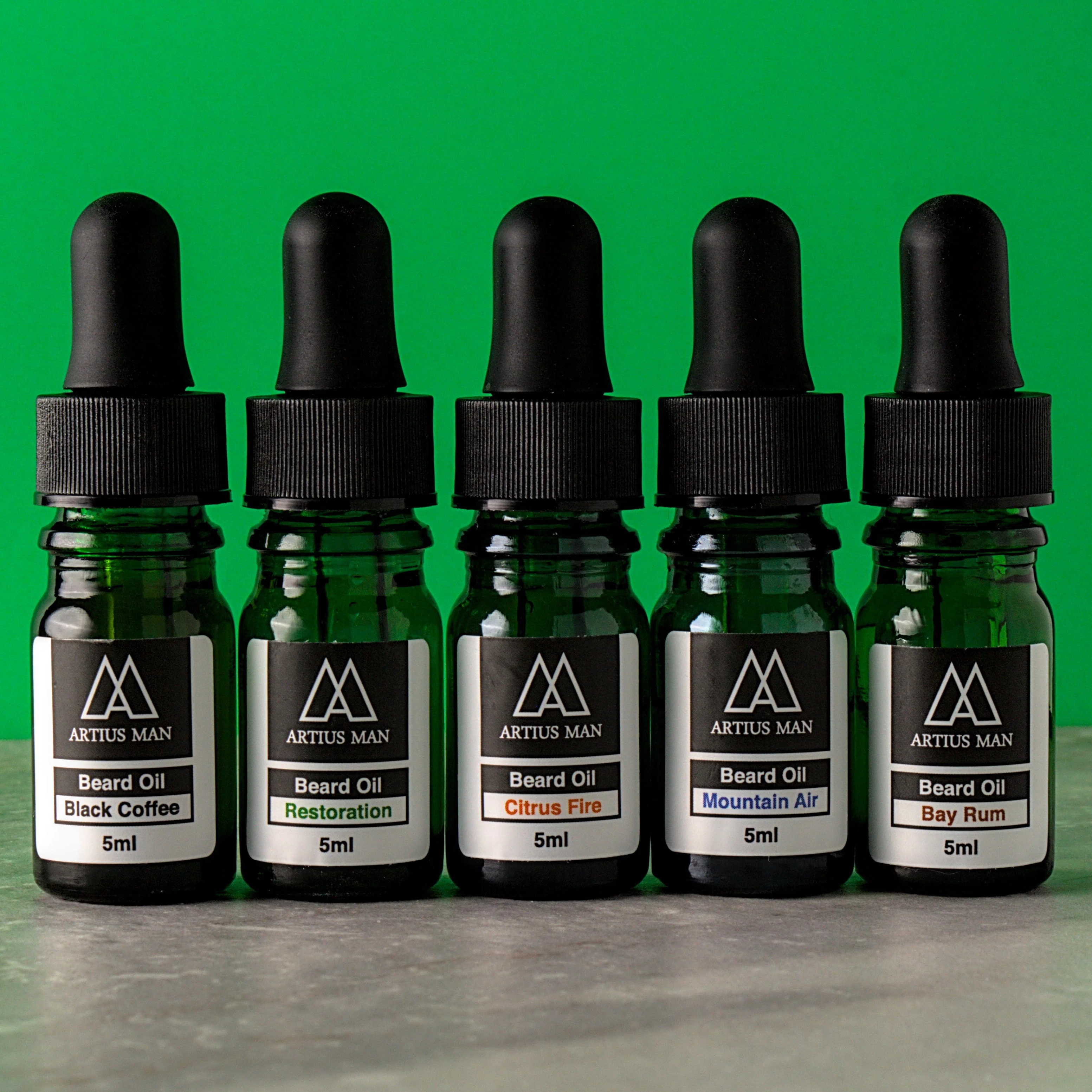Bird Photography with Sigma 150-500mm OS
After my review of the Tamron 150-600mm VC telephoto zoom lens appeared here at Photography Life, a number of readers had questions on how that lens compared to the long telephoto zooms from Sigma. As luck would have it, I was able to borrow a recently purchased Sigma 150-500mm OS from a friend and this article captures some initial thoughts about photographing birds, including those in flight, with this lens.
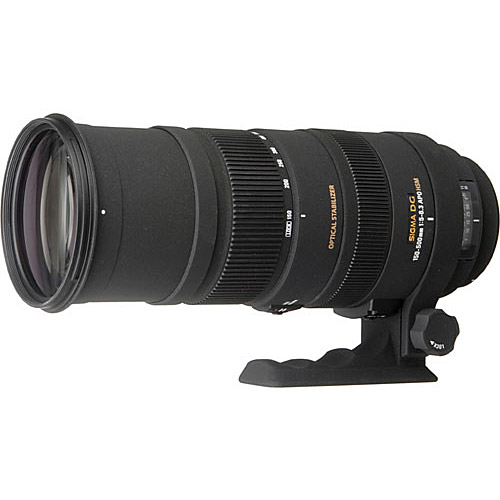
The first question many readers had was about the comparative sharpness of each lens at its longest focal length. Is the Sigma 150-500mm as sharp at 500mm as the Tamron 150-600mm VC is at 600mm? Based on my experience the short answer is…no. To my eye the Tamron is noticeably sharper at its full focal length compared to the Sigma 150-500mm OS. To be fair, both lenses at their longest focal lengths require sharpening in post.

The fact that the Tamron is sharper should not come as any surprise since the Sigma was introduced back in 2008 and the Tamron has the benefit of over 5 years of improvements in lens design and manufacturing techniques. In addition, the rather unforgiving 36 MP sensor of my D800 wouldn’t have been any kind of a design consideration when the Sigma was launched back in 2008, but it is a reality with new generation lenses like the Tamron 150-600mm VC.
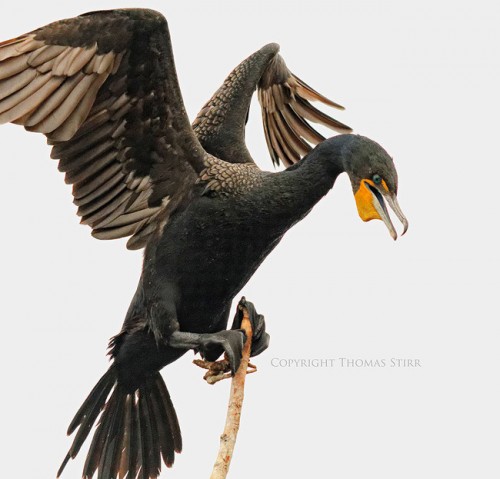
The first day that I went out with the Sigma I was shooting in very dull, overcast conditions. I was shooting primarily gulls, terns and cormorants which made things even more challenging with a lot of ‘grey on grey’ or ‘black on grey’ images. The lens handled these difficult conditions very well in terms of focus speed with my D800 using single point focus.
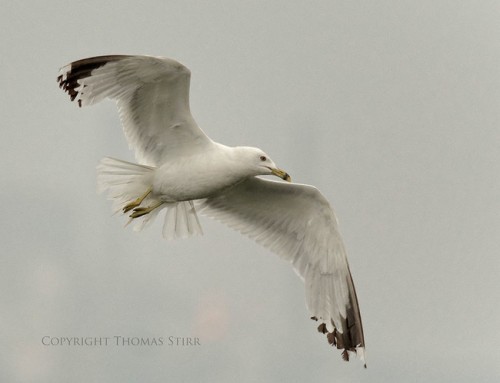
The size and weight of the Sigma is similar to the Tamron 150-600mm and I did not find it onerous to shoot hand-held. For mid-range subjects the shorter zoom range of the Sigma actually helped me pick up birds in flight a little bit easier as the field-of-view was broader.
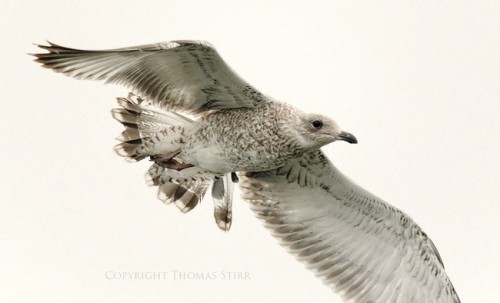
As with the Tamron, I rotated the tripod collar 180-degrees so it was on the top of the lens so I could use it as a carrying handle. It wasn’t quite as comfortable as the Tamron as the tripod collar foot is a bit shorter. This made for a three-finger rather than a four-finger grip on the tripod collar.
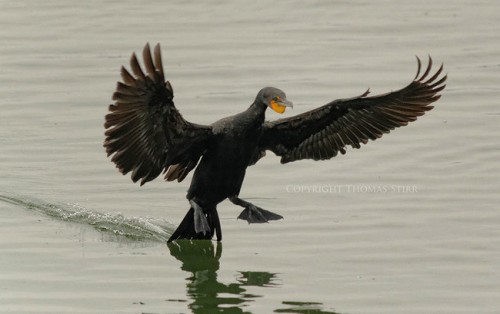
The Sigma 150-500mm has a lock to prevent lens creep. There is only one setting at the fully retracted position. I found the Tamron’s second setting at 400mm to be quite handy.

There is no focus limiter switch on the Sigma and from time to time the lens hunted quite a bit. I found it helpful to pre-focus it in anticipation of my next shot. The Sigma has two optical stabilization settings. Setting ‘1’ provides both vertical and horizontal corrections, whereas the ‘2’ setting only has vertical corrections. This allows optical stabilization to be used when panning with birds in flight.
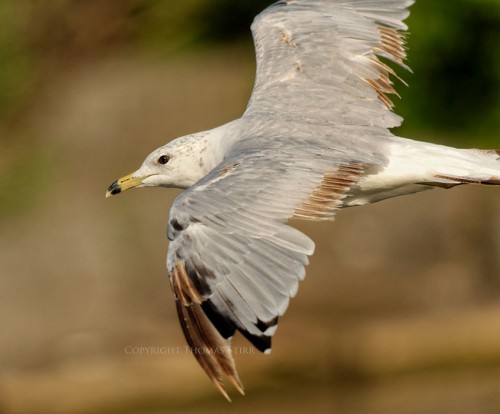
The Sigma did not suffer from any focus lag when used with a Nikon D7000 or a D70. Readers may recall from my review of the Tamron 150-600mm VC that focus lag was an issue with older Nikon bodies, especially when using single point focus. The difference between the two lenses is likely due to better firmware compatibility of the Sigma 150-500mm OS with older bodies.
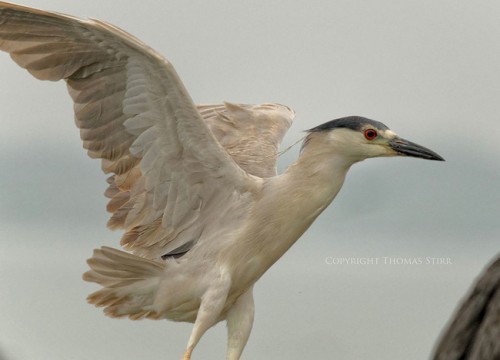
Under overcast conditions the Sigma 150-500mm OS produced somewhat flat looking images that lacked in colour rendition as well as contrast. I typically shoot in ‘RAW plus jpeg fine’ and I found that some of the jpegs shot with the Sigma had a muddy appearance. It took a fair amount of work in post to get the Sigma RAW images to where I wanted them.

I ran the RAW files through my typical DxOMark OpticsPro settings, then through CS6 and Nik. Overall, I found that I had to add quite a few more adjustments to the Sigma files than with the Tamron produced files. Typically this included more Gamma adjustment, vibrance, and contrast as well as a host of other ‘tweaks’ that were image specific. The Sigma files also needed more sharpening, especially when shot at the longer end of the focal range. I found that I had to spend quite a bit more time working with the Sigma files than with the Tamron-produced ones…easily double.
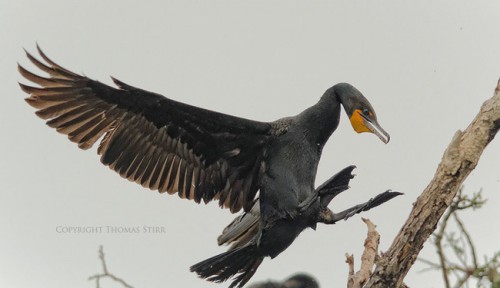
Even after post processing I liked the Tamron produced files better than those from the Sigma 150-500mm OS. They just seemed sharper, had richer colours, and just ‘popped’ more. That’s not to say that you can’t get some decent images using the Sigma. You certainly can. It just takes more time in post to get them to where they need to be. If you’d like to see more images of birds taken with the Sigma 150-500mm OS, see the YouTube video below:
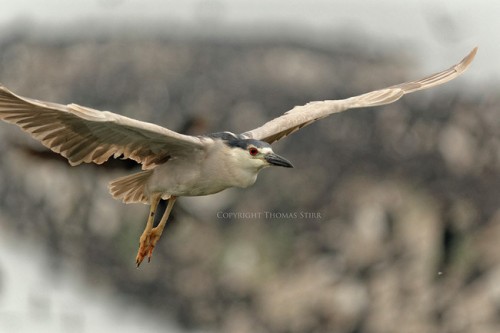
In bright sunlight the Sigma performed better and the jpegs looked cleaner, although the shadows areas on some images still had a bit of muddiness to them. In good lighting focusing with the Sigma was very fast and accurate. If any Photography Life readers have ever tried to capture a swallow in flight over water…you know exactly how challenging that can be.

I was using a Nikon D7000 for part of my hands-on test and I was able to get a number of usable images of swallows in flight with it when using the Sigma 150-500mm OS. This was something I didn’t even bother trying with the Tamron when shooting with a D7000 due to focus lag. I also tried a number of AF-C bursts with the D7000 and got good results with the Sigma, filling up the D7000’s buffer on numerous occasions with well-focused sequential shots.
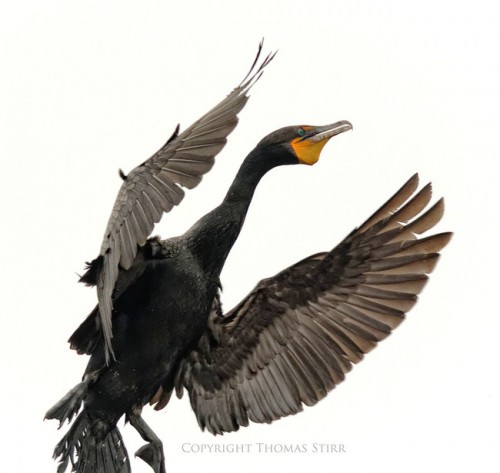
There was no question that the Nikon D7000 performed much better with the Sigma 150-500mm OS than it did with the Tamron 150-600mm VC. Focus was much faster and I was able to grab a number of fast-breaking images with the Sigma that I’m certain I would have missed completely with the Tamron. Future firmware updates may improve things with the Tamron, but presently the Sigma 150-500mm OS performs far better on older Nikon bodies than the Tamron does.
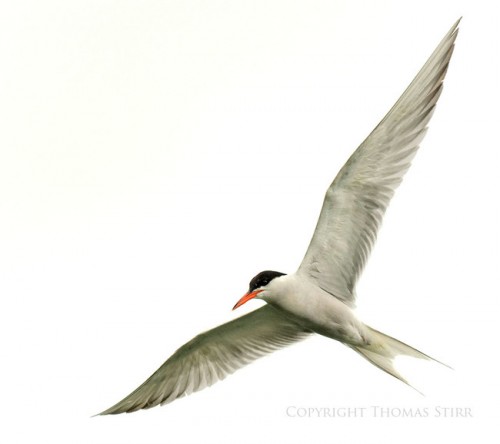
So, what’s the bottom line? I think readers who own newer DSLR bodies will be better served buying the Tamron 150-600mm VC in terms of overall lens performance and image quality. Of course that is assuming that they are prepared to invest the additional money in the Tamron 150-600mm VC over the Sigma 150-500mm OS.
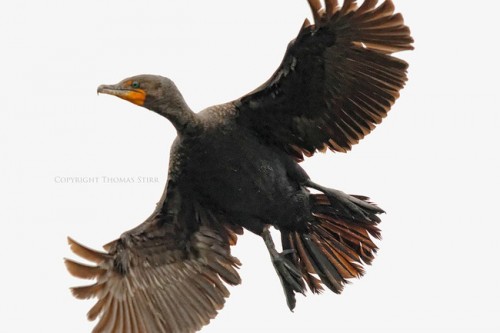
There is a caution around focus lag with the Tamron 150-600mm VC, even with fairly recent bodies like the Nikon D7000. Future Tamron firmware updates may be successful in addressing the focus lag issue. In the meantime readers would be well advised to test out their older Nikon DSLR body on the Tamron 150-600mm VC before making a purchase. If you own an older Nikon body like a D70 through D7000, it doesn’t appear that you will have any issues with focus lag with the Sigma 150-500 OS.
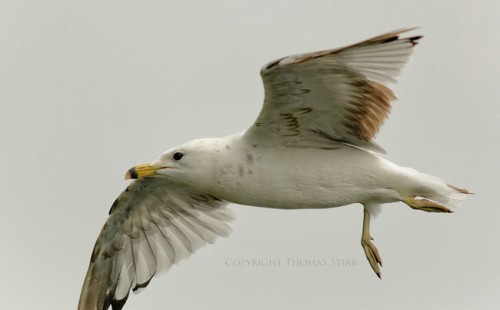
The current pricing on the Sigma 150-500 OS is very attractive and for budget conscious folks who are looking for a cost-affordable long telephoto zoom, the Sigma 150-500 OS could be an attractive option, especially if they own an older DSLR body. You’ll need to have realistic expectations around image quality if you choose this option, and be willing to spend more time in post.
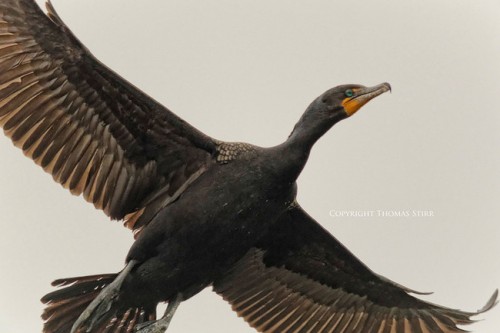
For owners of Nikon 1 V2 camera bodies…my V2 did not recognize the Sigma 150-500mm OS at all. My V2 body has the latest firmware that supports 15 fps when using the FT-1 adapter. Another friend of mine has a V2 and it works fine with his Sigma 150-500mm OS. I suspect this has something to do with differences between firmware versions. Unfortunately I did not have a chance to shoot my Nikon 1 V2 with the Sigma 150-500mm so I can’t comment on image quality or focus speed/accuracy.

As reviewers of camera bodies and lenses we sometimes forget that for the vast majority of people photography is really about having fun and being creative. Whether a particular body/lens combination produces ‘pro-level’ image quality or not, isn’t the main concern for many photographers. They want a ‘no hassle’ experience that enables them to capture some new and different images, and have a lot of fun along the way.
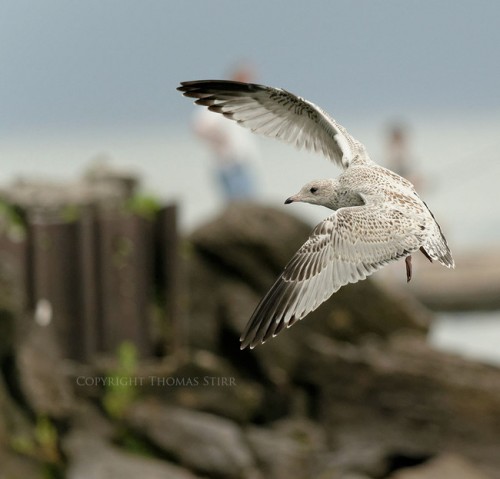
Even though the Sigma 150-500mm OS is an ‘older’ lens, a lot of folks will have a ton of fun shooting with it, especially if they own an older DSLR body. Plus, it is affordably priced compared to the other options available. The fact that it is available in Nikon, Canon, Sony and Pentax mounts will also add to its appeal for a great many photographers.

























.gif)




